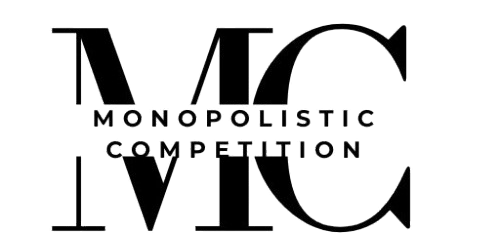Even though the AgTech sector in North America showed some growth this year, increasing in value from $9.26 billion in 2023 to an estimated $11.46 billion, it was still a turbulent 12 months. Constrained funding, uncertain economic conditions, and rising challenges for companies navigating the biological and crop protection landscape all contributed to a more restrained environment. However, there is reason for cautious optimism in the new year.
Investment trends are evolving, with investor expectations shifting. There are also opportunities emerging for those organizations that can deliver tangible value. To this end, we’ve identified five trends that will contribute to the AgTech outlook in the coming months. These will be shaped by macroeconomic conditions globally and particularly in the US, investor priorities, and technological innovation.
1. Recovery depends on macroeconomic stability
Sustainable growth in the AgTech sector in 2025 will be closely tied to macroeconomic stability, not just in the US but on a global scale. Trade tariffs, supply chain disruptions, and inflationary pressures remain key challenges, but much of the sector’s momentum hinges on decisions made by the incoming US and various European administrations. Policies surrounding climate initiatives, subsidies, and agricultural trade agreements will either create an enabling environment for investment or deepen market uncertainty.
A more stable global economic outlook, combined with supportive domestic policies, could restore investor confidence and unlock funding opportunities. Conversely, prolonged stagnation or unfavorable policies could extend the challenges seen throughout 2024. For the AgTech industry, stability is the foundation for growth, and 2025 will be a critical year in determining whether this balance can be achieved.
2. A new breed of investors with higher expectations
Additionally, the investor landscape for AgTech is changing. Many traditional AgTech venture funds, having struggled to secure strong exits, are unlikely to raise new rounds of funding. In their place, impact-focused and climate-centric VCs are stepping in, driven by the urgency to address climate change and its critical ties to agriculture. If anything, food and agriculture will be one of the most important components of this climate change focus. These investors bring with them a new set of priorities, placing greater emphasis on sustainability, measurable results, and long-term viability.
For startups, the bar has been raised. Investors are demanding clearer proof points, tighter unit economics, and scalable business models that can pass more intense scrutiny. While this shift may favor younger startups still in early growth stages, later-stage companies that have yet to demonstrate financial viability could face significant hurdles. Funding will likely flow to startups that can pass the ‘reality check’ on scalability and value creation. Even so, higher investor expectations will likely see lower valuations continue for the foreseeable future.
3. Big acquisitions are on hold — Smaller players will seize the opportunity
The financial challenges faced by major agrochemical companies suggest that large-scale acquisitions in the AgTech space will remain subdued in 2025. Many of the industry’s biggest players are focused on cost control and operational efficiency, leaving little appetite for major deals. This pause in acquisitions is likely to continue for the next three to four years as these companies manage their financial performances and recover from ongoing market pressures.
However, this shift presents opportunities for second-tier players and private equity firms to step into the vacuum. Smaller companies with strategic capital could take advantage of asset divestments and forced sales, acquiring distressed assets or undervalued technologies. The result may be a wave of roll-up strategies, where agile players consolidate assets and strengthen their market positions.
We anticipate that this will be one of the most interesting areas to watch in 2025. Companies with time-sensitive investors may be forced into sales at lower valuations, creating openings for strategic consolidations at a fraction of the value.
4. Generative AI will drive targeted innovation
Generative AI (GenAI) is emerging as one of the most transformative tools in agriculture, and its role in 2025 will be increasingly practical. The focus will no longer be on broad AI promises but rather on solving specific, high-value problems. Companies applying GenAI to targeted areas such as soil health monitoring, crop disease prediction, supply chain management, and biological innovation are well-positioned to attract significant funding.
The growing sophistication of AI models allows startups to identify solutions that unlock real efficiencies for farmers, streamline processes, and reduce costs. Investors will prioritize those organizations that can demonstrate measurable results, backed by comprehensive AI-driven processes.
5. The US recovery could outpace Europe but with caveats
While Europe’s regulatory consistency provides a foundation of resilience for AgTech investment, the US presents both greater potential and higher volatility. The sheer scale of the US market, combined with its innovation-driven ecosystem, positions it for a sharper recovery if favorable policies emerge. Climate-focused regulation, trade agreements, and incentives for sustainable agriculture could accelerate this rebound, fostering an environment where funding flows more readily to innovative companies.
However, this recovery is highly sensitive to political shifts. If climate policy is deprioritized or a more protectionist stance is adopted, the momentum could stall. Europe, in contrast, may lack the dynamism of the US market but offers steady progress driven by its long-term commitment to sustainability and stricter regulatory frameworks.
Potential for a new beginning
While macroeconomic uncertainty persists, the opportunities for companies to deliver measurable value in AgTech are growing. New investors, particularly those focused on climate and demonstratable impact, are entering the space with clear expectations, while technologies like GenAI are enabling practical, targeted innovation. At the same time, a pause in major acquisitions may create room for smaller players to consolidate and thrive.
For startups and innovators willing to navigate these evolving dynamics, 2025 could mark the beginning of a new and transformative chapter for AgTech.












Leave a Reply